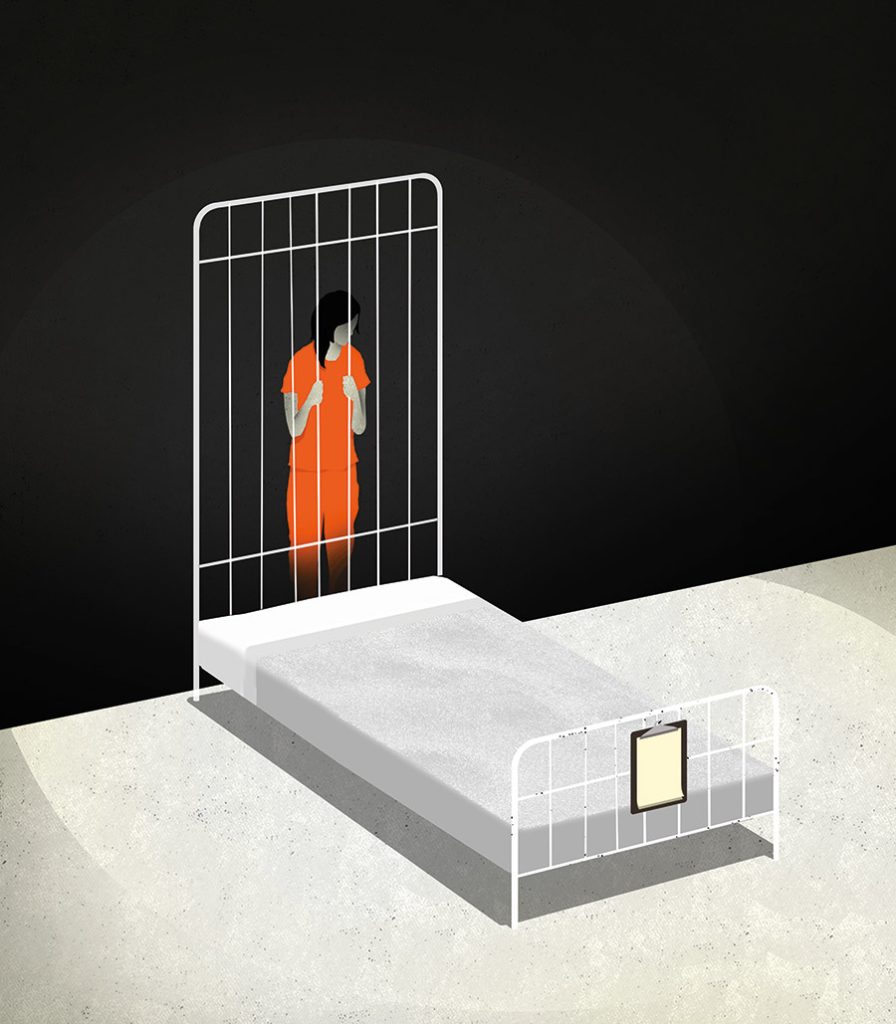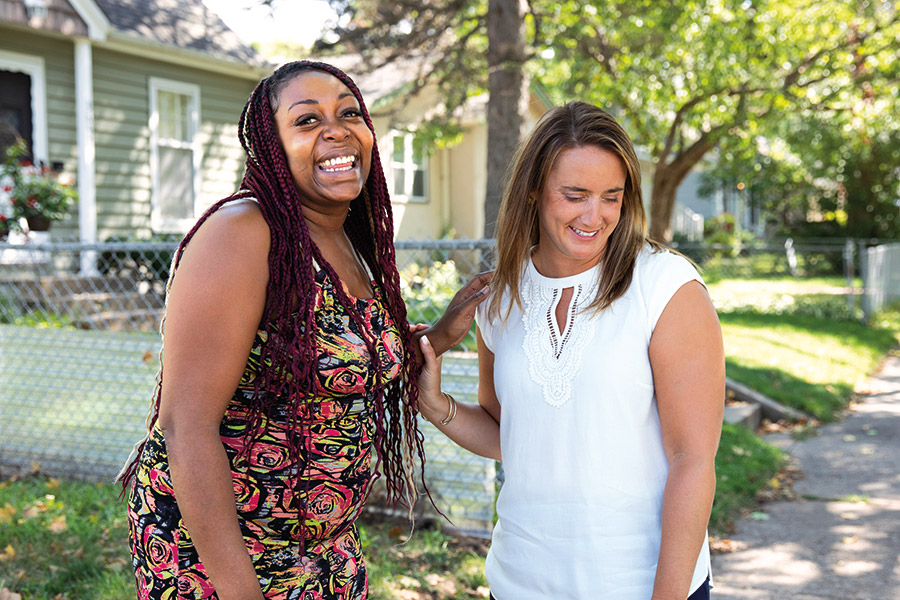
On May 14, 2021, Minnesota Gov. Tim Walz signed the historic Healthy Start Act into law. The bill allows women who give birth while incarcerated to serve their sentences in community alternatives, such as halfway houses or substance abuse rehabilitation centers, for up to a year with their child rather than being separated during this critical time. In Minnesota, where an estimated 20 women give birth while in prison each year, many women reach their release dates within six months of their child being born.
Prior to the act’s passage, women who were incarcerated and pregnant in Minnesota’s Shakopee Correctional Facility, a women-only state prison, gave birth in a hospital and were returned to the prison in two or three days, a practice common in a majority of states. Their babies were taken in by relatives or the state’s foster-care system. The impact of separating mother and infant can be profoundly harmful and set the child up for a host of adverse challenges. This bill gives the mother /child relationship a better chance for a “healthy start.”
School of Public Health affiliate faculty member and alumna (MPH ’16) Rebecca Shlafer is an assistant professor in the Medical School’s Department of Pediatrics. She researches the development of children and families with multiple risk factors, particularly those affected by incarceration. Shlafer’s involvement was key to the bill’s passage as she joined the many people who provided testimony supporting the bill at the state legislature.
Measuring impact
How to measure the success of this landmark bill and capture how the Healthy Start Act addresses the needs of a mother and child and also the wider, broader challenges raised by the fact that children are being born in prisons at all are thoughts that occupy Shlafer’s mind.

Photo: Asha Belk/Asha Belk Photography
“I tend to think big picture,” she says. “We don’t want pregnant people in prison, so what do we do to end prison birth entirely? And how do we do a stellar job in Minnesota, track what we’ve done, and document the successes so that we can take these stories and tell them elsewhere?”
The urgency in her voice is echoed by everyone who came together to pass the Healthy Start Act, but also by a broader movement, in Minnesota and nationwide, to address the plight of women who are incarcerated or give birth while in prison. Little attention is paid to incarcerated women, in general — who are disproportionately lower-income individuals and/or people of color — and even less to those women who are pregnant or giving birth, an estimated 55,000 women per year nationally, a number extrapolated from a 2020 study.
Stories matter
“I came into this work by personal experience, but over time my awareness of the larger issue of incarcerated women has really taken a leap in the right direction,” says Autumn Mason. In 2014, Mason gave birth to her daughter while incarcerated at the Shakopee Correctional Facility where she wasn’t allowed visitors prior to giving birth, but did have access to a doula. Mason surrendered her daughter to her mother after about 36 hours. She saw her daughter three months later and for the following seven months, but because of being moved to a different facility, not again until her release in 2016. Mason then started working with the Minnesota Prison Doula Project as a peer support specialist, and became an advocate for reform by relating her own experiences.
“I think putting faces to stories helped pass the Healthy Start Bill and has really helped humanize the perception that society generally has about formerly incarcerated women,” says Mason. “We are real people with real families, and just like everyone else, we make mistakes. We want to redeem ourselves in our community, but we also need the opportunity to be redeemed, to be supported through that process.”
The Healthy Start Act aims to help that re-entry process for mothers, but the bill’s implementation means adapting existing or creating new support services and systems.
“On the immediate horizon is making sure that this law rolls out in a way where we’re not just getting pregnant people out of prison,” Shlafer says. “We’re trying to figure out how we wrap services around them so that they don’t fall through the cracks in a really poor social safety net.”
The bigger picture
The public face of mass incarceration is typically a man, even though the population of women who are incarcerated has increased more than 700% since 1980. And more than 2.7 million children in the U.S. have an incarcerated parent: 1 in 28 children. A growing body of research suggests that having a mother in prison is associated with a child’s increased risk for behavioral problems, substance use, cognitive skill deficits, physical health problems, and academic underperformance.
Shlafer became interested in understanding children and families affected by incarceration as an undergraduate. In 2008, as she was finishing her University of Minnesota PhD in child psychology, the Minnesota Department of Corrections (DOC) fortuitously put Shlafer in contact with Erica Gerrity, a licensed clinical social worker and doula who’d been working with incarcerated women and their children for roughly a decade. Gerrity was providing direct services to women inside Shakopee; Shlafer was looking to bring her research and evaluation tools to just such a program.
“How do we do a stellar job in Minnesota, track what we’ve done, and document the successes so that we can take these stories and tell them elsewhere?”
Rebecca Shlafer
Gerrity’s work in prisons was showing her how doula services, health education, and basic counseling were helping the women she worked with, and Shlafer wanted to know how they were documenting their success stories and sharing them. Their budding partnership led Gerrity to create the Minnesota Prison Doula Project in 2008, with Shlafer as research director.
But baseline data and collateral scholarship about pregnant incarcerated women before, during, and after birth is scant, and sometimes even determining what to consider a data point is challenging. Looking at postpartum depression, for example, Gerrity points out that clinicians understand the signs, but the niche population of women who give birth while incarcerated have radically different experiences.
“When I am sitting with someone and they’re getting ready to be separated from their baby, and it’s the most devastating psychological experience of their life, I’m looking them in the eye saying, You can do this — I know you feel like you can’t but you can and I’m right here with you,” Gerrity says. “I know as a clinician that is reducing the likelihood of that woman experiencing PTSD, but how do I measure the impact of that conversation?
“As our work grows, we have to push ourselves beyond our own knowledge and skill sets to get the data to do right by these women, to demonstrate the effectiveness of what we’re doing.”
Coming together to pass the bill
One of Gov. Walz’s goals is to make Minnesota a great place for all families and their children, and that includes families affected by incarceration. The Healthy Start Act was introduced and written by Rep. Jamie Becker-Finn, a Democrat, and Sen. Mary Kiffmeyer, a Republican.
In October 2019, the DOC invited incarcerated women and advocates, including the Minnesota Prison Doula Project, for a listening session with Rep. Becker-Finn and Lieutenant Governor Peggy Flanagan. Women who had given birth while incarcerated, such as Mason, told their stories, and Safia Khan, the director of government and external relations for the Minnesota DOC, says the elected officials “were just flabbergasted to hear the extent of the women’s experiences.” Kahn says their advocacy was crucial.
Shlafer, Gerrity, and Khan are now focused on the various aspects of implementing the bill. Creating a supportive infrastructure for mothers and children is one part. Understanding if and how it is appropriately benefitting mothers and their children is another part. And documenting these processes so that they might become a model for best practices elsewhere is yet another part.
Improving the lives of women who give birth in prison is possible and the women they work with are showing them that every day.
“I believe that this work has been very therapeutic for me,” Mason says of the Minnesota Prison Doula Project. Because she wasn’t able to see her child during her first year, she knows how hard it can be to build that mother-child bond from scratch. “We’ve been in family therapy for a few years now, and she’s adjusting,” says Mason. “It was a struggle at first when I came home, I won’t lie. She didn’t even acknowledge or recognize me as her mom. So the process continues. We’re definitely a lot better than when we started.”


